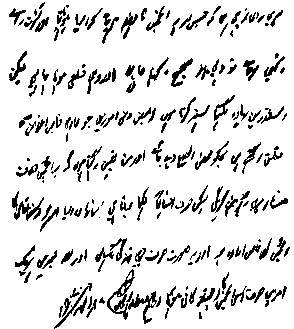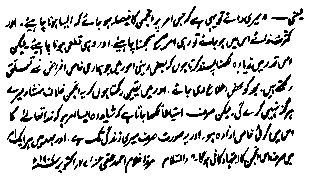Showing Islam is Peaceful • Tolerant • Rational • Inspiring
|
The year 1905 was coming to a close when he received certain revelations to the effect that his end was nigh. On the 24th December 1905, he published his last will, Al-Wasiyya (or The Will), in which he wrote: Below are given some of these revelations: A few words of comfort are added for his disciples, and they are told that the movement will prosper after his death: The arrangements for the carrying on of the movement are then suggested. The first point was initiation into the movement. While the founder was alive, he personally initiated new members into the movement. After his death, he directed that members should be initiated by the righteous from among his followers. And he wrote:
Anjuman to carry on work after him The second point was the management of the affairs connected with the movement, and for this an Anjuman was established with full powers to deal with all such topics. This Anjuman was formed under the name of Sadr Anjuman Ahmadiyya (or, The Chief Society of the Ahmadis), and the rules and regulations controlling it were given under Ahmad’s own signature. It began to function immediately after the publication of The Will, exercising full authority over all the affairs of the movement, including its finances. When a dispute arose, about twenty months after the Anjuman was formed, as to the extent of its powers, and the matter was referred to the founder, he gave his decision in the following words:
The Anjuman was thus entrusted with the fullest powers in all affairs relating to the movement, and in his own words "the Anjuman was the successor of the Divinely-appointed Khalifa".
Message of peace As already noted, in April 1908, he went to Lahore. There, while occupied from day to day in explaining his position to eager Muslim listeners, who wondered when they heard from his own lips that he was not a claimant to prophethood, he began writing a pamphlet, containing a special message for his Hindu countrymen, aiming at bringing about lasting union between the Hindus and the Muslims. The message was based on the broad Quranic principle which he had been preaching all his life that all religions emanated from a Divine source, as the Holy Quran clearly said: "And there is not a nation but a warner has gone among them" (35:24). In accordance with this verse, he held that prophets must have appeared in India, and, as Rama and Krishna were the two great reformers recognised by the Hindus, they must have been the prophets sent to that people. He called upon the Hindus to reciprocate the Muslim recognition of the Hindu prophets by recognising the prophethood of the Holy Prophet Muhammad. If they did that, a lasting peace could be achieved between the Hindus and the Muslims, in which case he and his followers were prepared to make a further concession to Hindu religious sentiment by giving up their lawful right of slaughtering cows and using beef as an article of food. This message was aptly named the "Message of Peace", and it proved to be his last message.
Founder’s demise At the age of seventy-three, he was still wielding his pen in the cause of Islam with the energy of a man of thirty. He had just finished the last lines of his Message of Peace, outlining the possible basis of an everlasting peace between the Hindus and the Muslims, when suddenly he fell ill at 10 p.m. on the evening of the 25th May, with an attack of diarrhoea, to which he succumbed at 10 a.m. on the morning of 26th May, 1908. The Civil Surgeon of Lahore certified that death was not due to an infectious disease, and it was on the production of this certificate that the authorities permitted the carrying of his body to Qadian, where it was consigned to its last resting-place, on the 27th May.
|

